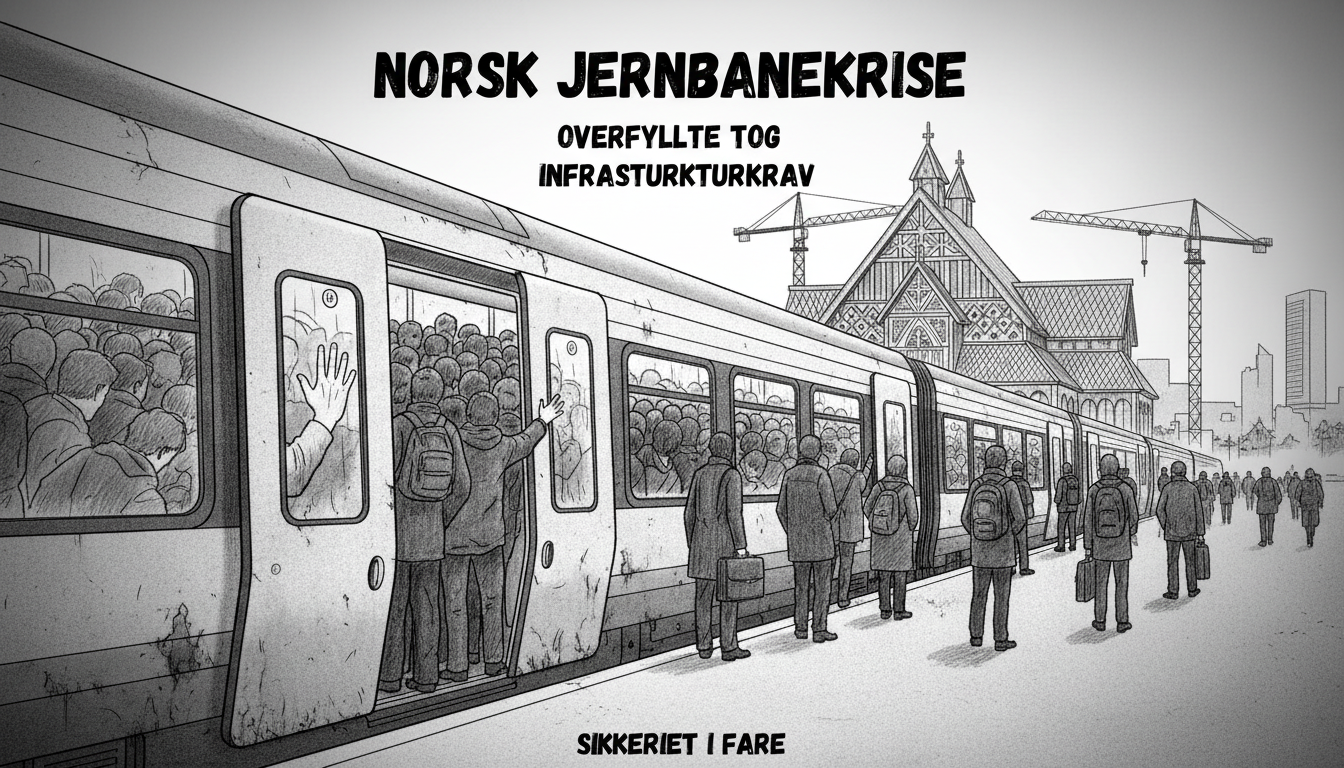Overcrowded trains during rush hour have created dangerous conditions across Eastern Norway's railway network. Passengers report fainting in packed carriages while many commuters get left behind on platforms during peak travel times. The situation has reached a critical point according to internal documents obtained by Nordic media.
Erik Røhne, the director of passenger trains at Norway's state railway operator, confirmed the capacity challenges will continue through the winter season. He described the current circumstances as creating an unsustainable situation for customers.
The core problem stems from major renovation work at Bane Nor's maintenance workshop in Drammen. This facility handles most train repairs and maintenance for Norway's entire fleet. Reduced workshop capacity means fewer available trains during high-demand periods.
In September, railway executives sent a formal letter to Bane Nor's CEO with copies to the Railway Directorate and Ministry of Transport. The correspondence highlighted limited willingness to implement measures that would provide substantial improvements for passengers.
Since April, Bane Nor has deliberately reduced capacity at the Sundland workshop in Drammen. This decision particularly affects regional train lines running through the Drammen-Oslo corridor. The bottleneck creates cascading problems throughout the system.
Trains now queue at maintenance facilities instead of serving passengers. The shortage forces operators to run single-carriage trains during rush hours even on busy local routes like L1 and L2. Older train models compound the reliability issues.
Financial consequences are mounting for the railway company. Overcrowded trains lead to poorer customer experiences, damaged reputation, and reduced passenger numbers. These factors combine to create substantial revenue losses according to internal assessments.
The maintenance crisis connects to broader infrastructure upgrades. Bane Nor's Drammen workshop requires expansion to accommodate 17 new long-distance trains scheduled for introduction in coming years. These 220-meter trainsets exceed current facility capabilities.
Construction of a new workshop hall must complete by 2027 to service the incoming fleet. Current renovation work has created a severe bottleneck. Between April and July alone, over 20 different activities completely or partially eliminated maintenance capacity at Sundland.
Summer closures at Sundland forced temporary relocation of maintenance operations to Skien facilities. Additional delays occurred when station work at Drammen fell three weeks behind schedule in August. Construction of new receiving facilities for future trains further reduced available workshop space.
Railway officials express frustration with the pace of solutions. They have proposed practical measures to increase capacity and improve traffic flow at the workshop. Some suggestions would require Bane Nor to modify the framework of their reconstruction project.
Bane Nor representatives acknowledge the logistical challenges. They maintain ongoing dialogue with railway operators about finding cooperative solutions. The state infrastructure company emphasizes their goal of succeeding through collective effort while balancing upgrade requirements with current service needs.
This situation reflects broader challenges in Nordic infrastructure management. Norway's railway system faces increasing pressure from growing urban populations while maintaining aging infrastructure. The tension between necessary long-term upgrades and immediate service delivery creates complex operational dilemmas.
Commuters in Eastern Norway's densely populated corridor experience the direct consequences of these systemic issues. The region includes major cities like Oslo, Drammen, and surrounding municipalities where train travel represents a primary transportation option for hundreds of thousands of daily passengers.

